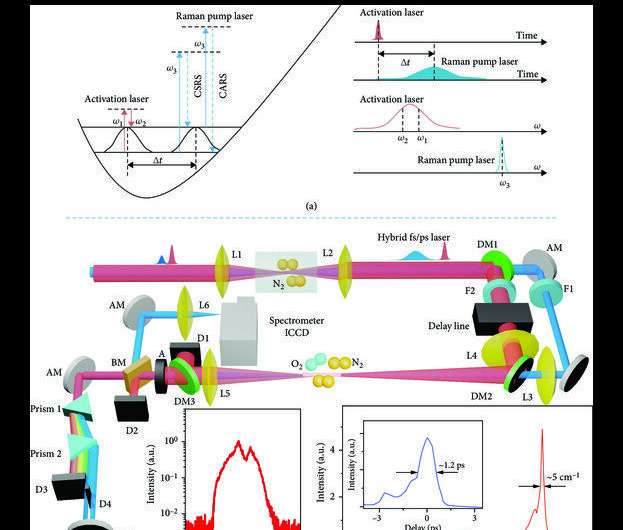Developing a standoff coherent Raman spectrometer

A novel air-laser-based standoff Raman spectrometer with high temporal and frequency resolutions has been constructed by Yao Fu and colleagues. The device can remotely probe chemical species in real time with high temporal resolution while monitoring the populations in their respective rovibronic levels in the frequency domain with sufficiently high spectral resolution.
The key advantages of this technique originate from the cavity-free picosecond (ps) N2+ air laser pulse at 391 nm generated by the filamentation of an intense femtosecond (fs)-pulsed laser, producing a hybrid ps/fs laser source at a desired standoff position with naturally temporal and spatial overlaps of the ps and fs pulses.
With this prototype Raman spectrometer, a proof-of-principle demonstration of Standoff Raman detection is achieved by the observation of the temporal evolution of the rovibrational wave packet of N2 as well as by the observation of the temporal evolution of the electronic, vibrational, and rotational wave packet of N2+.
Because this characteristic and advantageous performance of the air-laser-based coherent Raman technique can be realized by the nonlinear propagation of intense NIR femtosecond laser pulses in the air, the unique spectrometer device can easily be implemented in standoff spectroscopy, and opens new opportunities for researchers to explore remote detection and surveillance of chemical and biochemical species with sufficiently high temporal and frequency resolutions.
The findings are published in the journal Ultrafast Science.
More information: Yao Fu et al, Air-Laser-Based Standoff Coherent Raman Spectrometer, Ultrafast Science (2022). DOI: 10.34133/2022/9867028
Provided by Ultrafast Science





















